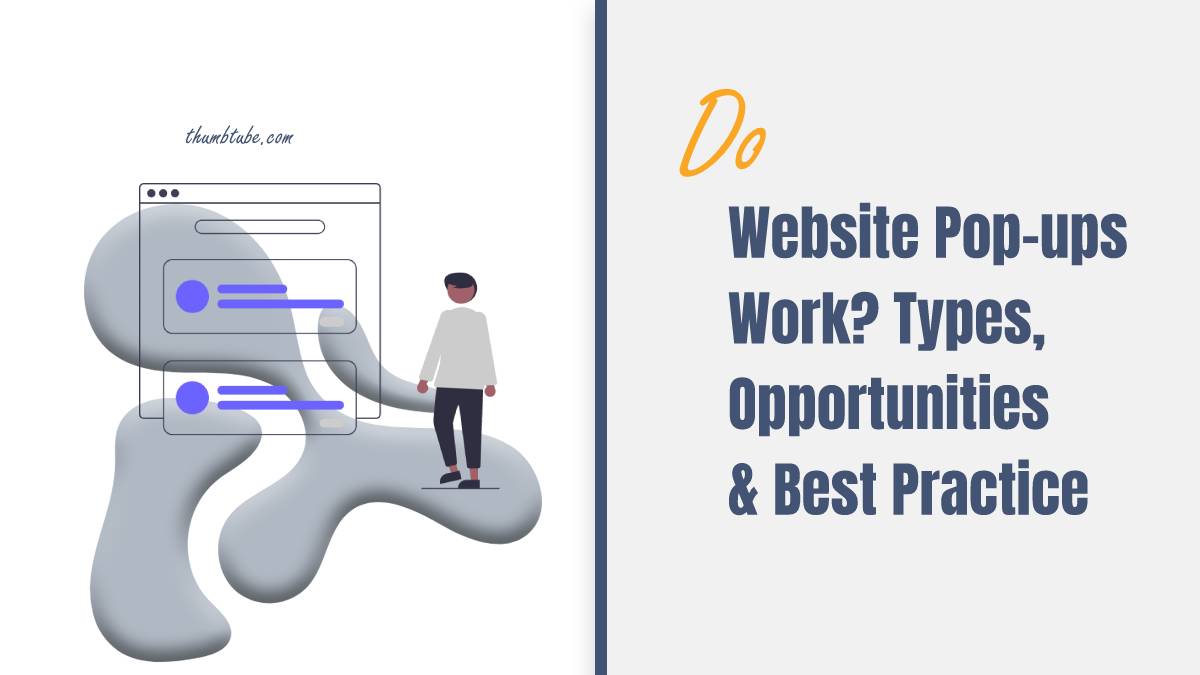Website pop-ups have been around for quite some time, and while some users find them annoying, there is no denying that they can be an effective way to engage with website visitors and increase conversions. In this article, we will explore the different types of pop-ups, their potential opportunities, and best practices for creating effective pop-ups.

Types of Pop-Ups
- Entry Pop-Ups – Entry pop-ups appear as soon as a user lands on a website. These pop-ups can be used to capture email addresses, offer promotions, or direct users to a specific page on the site.
- Exit Pop-Ups – Exit pop-ups appear when a user is about to leave a website. These pop-ups can be used to offer discounts or to ask for feedback.
- Scroll Pop-Ups – Scroll pop-ups appear when a user has scrolled through a certain percentage of the website. These pop-ups can be used to offer promotions or direct users to a specific page on the site.
- Timed Pop-Ups – Timed pop-ups appear after a user has been on the website for a certain amount of time. These pop-ups can be used to offer promotions, direct users to a specific page, or capture email addresses.
Opportunities of Pop-Ups
- Lead Generation – Pop-ups can be used to capture email addresses, which can then be used for email marketing campaigns. This is an effective way to build a database of potential customers.
- Increase Sales – Pop-ups can be used to offer promotions, such as discounts or free shipping, which can encourage users to make a purchase.
- Increase Engagement – Pop-ups can be used to direct users to a specific page on the site, such as a blog post or product page, which can increase engagement and time spent on the site.
Best Practices for Pop-Ups
- Timing – The timing of pop-ups is crucial. They should not appear immediately upon arrival, as this can be off-putting to users. Instead, they should appear after a user has had a chance to browse the site.
- Design – Pop-ups should be visually appealing and in line with the branding of the website. They should be easy to read and understand.
- Copy – The copy on the pop-up should be concise and clear. It should explain the value proposition and encourage the user to take action.
- Targeting – Pop-ups should be targeted to specific user segments based on their behavior on the site. For example, a pop-up offering a discount on a specific product could be targeted to users who have viewed that product.
- Frequency – Pop-ups should not appear too frequently, as this can be frustrating to users. A good rule of thumb is to limit pop-ups to once per session.
- Mobile Optimization – Pop-ups should be optimized for mobile devices, as more and more users are accessing websites on their smartphones and tablets.
Do Pop-Ups Work?
The effectiveness of pop-ups depends on a variety of factors, including the type of pop-up, the design and copy, and the targeting. When done correctly, pop-ups can be an effective way to engage with website visitors and increase conversions. However, it is important to be mindful of user experience and not to overuse pop-ups, as this can be off-putting to users.
In conclusion, pop-ups can be an effective tool for lead generation, increasing sales, and increasing engagement on websites. By following best practices and targeting specific user segments, businesses can create effective pop-ups that improve the user experience and ultimately drive conversions.
